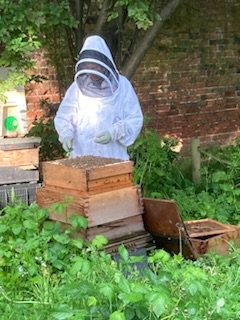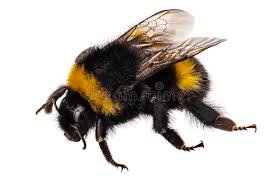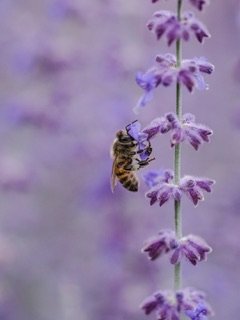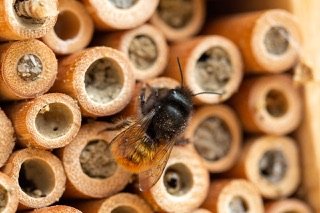There are 279 varieties of bees in the UK - the honey bee is just one of them.
7 years ago Bell House said ‘yes’ to bee hives. The first one was secondhand and cost £50. Each hive can have up to 60,000 individuals.
Honey bees feed on nectar and pollen which they can reach with their tongues.
Bell House now has 3 established hives which are taken care of by our beekeeper, Annie McGeoch. Annie has been interested in bees since the age of 6 - her grandad had hives in his garden in Lancashire - and she remembers those times fondly. Annie says she particularly loves the smell when a hive is opened.
If you’d like to find out more about honey bees you can book a place on one of Annie’s talks. Visit the website to book.
But as it’s World Bee day on Saturday 20th May here’s a shout out for just a few of the other bees you may have heard of.
Bumble bees are beautiful large clumsy balls of fluff. They are a social species, nesting in colonies ranging from a few dozen to several hundred bees. There are 24 varieties. Each variety has different food tastes and these include brambles, buddleia, thistles and rhododendrons.
Common carder bee is a little bee and the only UK species with all-brown colouring and no white tail. They range from ginger to a pale, sandy brown depending on how sun-bleached they are. They are found everywhere from arable land to urban gardens. Gorse, dandelions, dead-nettles are some of its favourite foods.
Mason bees buzz about in front of brick walls. This solitary species nests in cavities in wood, hollow stems and walls. They have boxy heads and large powerful jaws. Red mason bees are seen in built-up environments with plenty of gardens, churchyards and urban green space. And they are the bee most likely to be taking up residence in your bee hotel. Look out for a black head, brown thorax and orange abdomen, and in females, a lot of fluff.
Mining bees nest in the ground and they belong to a 67 strong group of diverse bees ranging from 5-7mm long. They feast on shrubs like hawthorn, fruit trees, dandelions and buttercups and much more.







